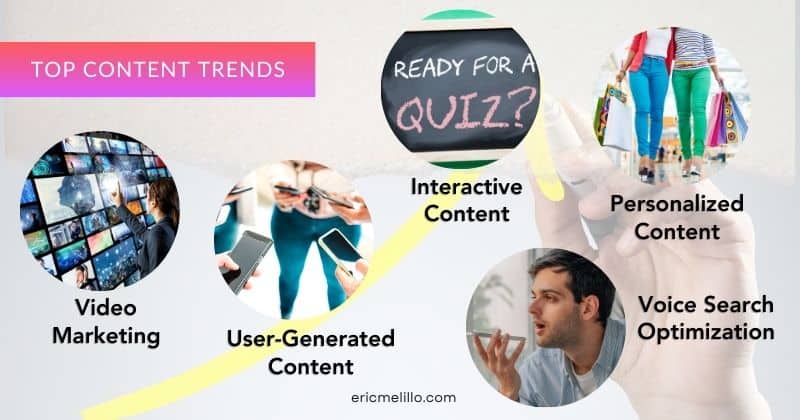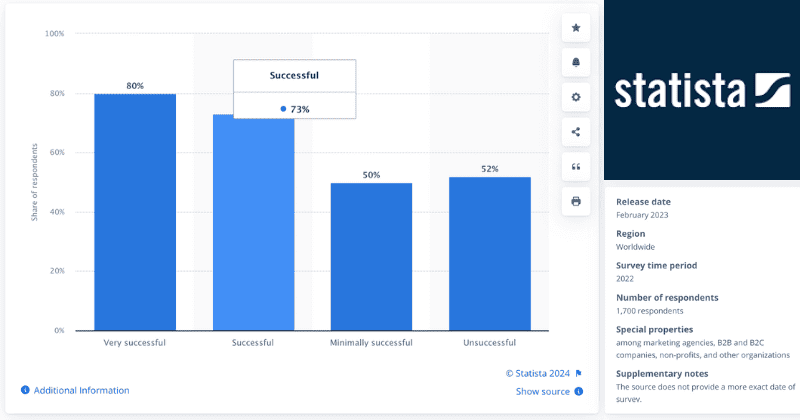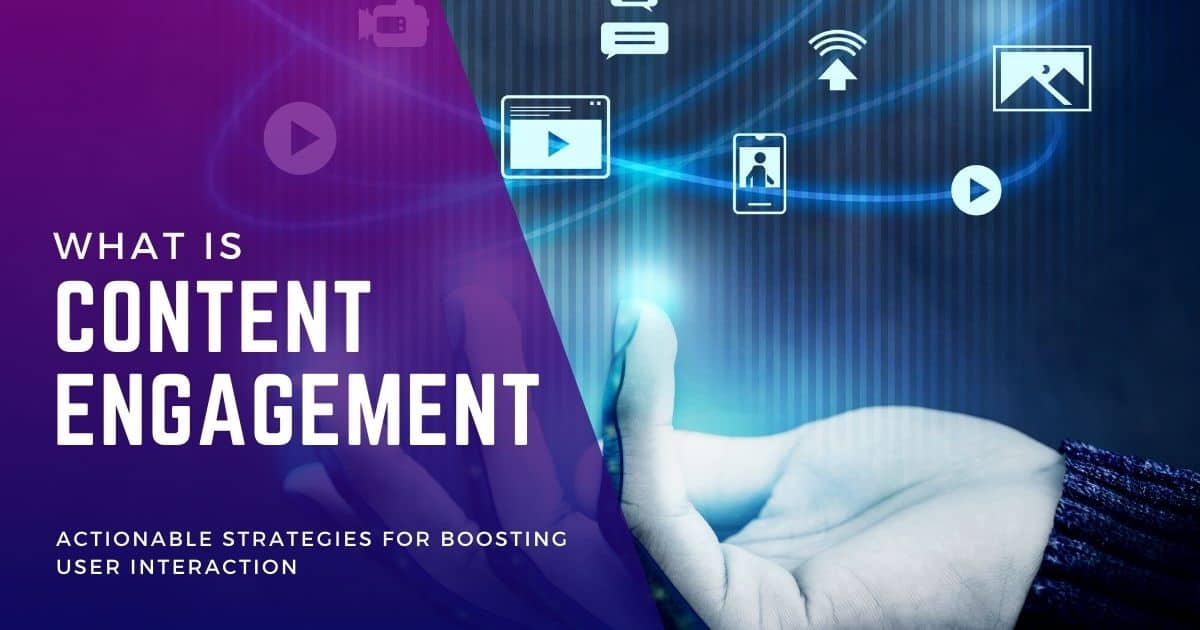Have you ever hit a wall with your content marketing strategies? Effective content marketing is more than just producing content; it’s about making a real impact. It involves creating material that truly connects with and influences your audience.
With extensive experience in content marketing, I’ve mastered the art of making content work. From identifying audience needs to measuring engagement, my journey has been about turning challenges into triumphs, offering insights that resonate with your unique marketing goals.
Understanding content marketing effectiveness is crucial. This article provides you with practical, actionable strategies to ensure your content reaches and profoundly engages your audience.
Understanding Content Marketing Effectiveness

Strategy Essentials
To ensure content marketing effectiveness, it’s crucial to establish clear goals and KPIs. These help in measuring the success of content efforts. Understanding the needs of the target audience is equally vital. By creating content addressing their pain points, brands can connect with their audience more deeply.
Consistent brand messaging across all content is essential for building brand recognition and trust among consumers. When brands maintain a consistent voice and message, they reinforce their identity in the minds of their audience.
A well-crafted buyer persona allows marketers to create targeted content that resonates with specific segments of their audience. For instance, if a company sells both high-end luxury products and budget-friendly options, tailoring content based on these distinctions ensures relevance for different buyer personas.
By utilizing data analytics tools, businesses can gain valuable insights into how audiences engage with various types of content. This knowledge enables them to refine their strategies by producing more effective and relevant material.
Audience-Centric Approaches
Identifying the most effective channels for reaching the target audience is an integral part of achieving content marketing effectiveness. Whether it’s social media platforms like Instagram or professional networks like LinkedIn, understanding where your audience spends time online helps in maximizing reach.
Leveraging multi-channel marketing strategies means not relying solely on one platform but diversifying across several channels based on where your target demographic frequents.
Adapting content for different platforms involves tailoring material to suit each channel’s unique requirements while maintaining consistency in messaging.
Tracking and analyzing key performance metrics such as engagement rates, conversion rates, and click-through rates are critical steps toward maximizing ROI from content marketing efforts. Implementing A/B testing allows marketers to compare two versions of a piece of content against each other to determine which performs better.
Aligning different types of content with various stages in the sales funnel ensures that prospects receive information tailored specifically to where they are in their purchasing journey.
Effective Content Trends

Let’s look at the top content trends that are changing the game. They’re not just popular – they’re powerful in keeping your audience engaged and interested.
| Content Trend | Effectiveness Potential |
|---|---|
| Video Marketing | High |
| Interactive Content | High |
| Personalized Content | High |
| User-Generated Content | High |
| Voice Search Optimization | High |
| Long-Form Content | Medium |
| Visual Storytelling | Medium |
| Influencer Marketing | Medium |
| Podcasting | Medium |
| AI-Generated Content | Low |
Interactive Content
Interactive content marketing has become a pivotal trend in the marketing landscape, captivating audiences and boosting engagement. By incorporating quizzes, polls, and interactive videos, companies can entice users to participate actively.
For instance, hosting contests and surveys within content encourages users to interact with brands, fostering a sense of involvement. Such initiatives enhance user experience by providing an immersive journey through the brand’s offerings.
Moreover, integrating interactive elements into content serves as an effective strategy for capturing audience attention. It allows businesses to gather valuable insights about their target market while simultaneously offering an engaging experience. This approach aligns with the evolving preferences of modern consumers who seek dynamic and participatory interactions with brands.
AI Integration
The integration of artificial intelligence (AI) into content marketing strategies is revolutionizing how businesses connect with their audiences. Leveraging AI for personalized content delivery ensures that each user receives tailored recommendations based on their interests and behaviors.
Furthermore, AI-powered content curation enables companies to streamline the process of delivering relevant information to their audience at scale.
Implementing AI-powered predictive analytics equips organizations with invaluable foresight into upcoming trends and consumer preferences. This empowers them to anticipate demand patterns accurately and create targeted campaigns that resonate effectively with their audience base.
Personalization Techniques
In today’s dynamic marketing trends, personalization techniques play a crucial role in elevating the impact of content strategies. Customizing content based on individual preferences allows businesses to forge deeper connections with their audience members by addressing their specific needs and interests directly.
Implementing dynamic content that adapts based on user behavior further enhances this personalized approach by ensuring that each interaction remains relevant throughout the customer journey.
Furthermore, leveraging personalized recommendations and product suggestions provides customers with tailored options that cater specifically to their requirements or desires. This not only enriches the overall customer experience but also fosters loyalty by demonstrating a deep understanding of individual preferences.
Voice and Visual Focus
Optimizing content marketing efforts for voice search compatibility represents a strategic move in response to shifting consumer behaviors toward voice-enabled devices such as smart speakers or virtual assistants like Siri or Alexa.
Integrating visual storytelling into content strategies offers an impactful way for businesses to convey compelling narratives while resonating powerfully with audiences across various digital platforms. Leveraging visual SEO tactics alongside voice search optimization ensures that companies remain visible across diverse channels while catering effectively to evolving search behaviors.
Crafting Effective SEO Content
Keyword Optimization
Understanding the impact of voice search on SEO is crucial. With the rise of voice assistants like Siri and Alexa, people are using more conversational phrases in their searches.
For instance, instead of typing “best Italian restaurants,” they might say, “What are the best Italian restaurants near me?”
This shift means that content creators need to optimize for long-tail conversational keywords. These are longer and more specific phrases that mimic how people speak.
Structured Data
Incorporating structured data for featured snippets or voice search results is another essential aspect of keyword optimization.
Structured data helps search engines understand your content better, making it more likely to be featured as a rich result or answer when someone asks a question aloud.
For example, if you run a recipe website, using structured data can help your recipes appear as quick answers when users ask their smart devices for cooking instructions.
AI-Driven Content
AI-driven content creation offers powerful tools for optimizing content effectively. Using AI for automated content creation can streamline processes by generating initial drafts based on given parameters such as topic and tone. This saves time while still allowing human writers to add personality and nuance.
Employing AI for real-time content optimization involves leveraging algorithms that dynamically analyze user behavior to adjust things like headlines or calls-to-action. For instance, an e-commerce site could use this technology to test different product descriptions with visitors and automatically display the most effective version based on engagement metrics.
Storytelling Impact
Storytelling plays a significant role in enhancing content marketing effectiveness by connecting with audiences on an emotional level. You can engage readers beyond just relaying information by crafting compelling narratives about your brand or products.
An example could be sharing success stories from customers who have benefited from your offerings; these stories create an emotional connection while also showcasing real-world benefits.
Evoking emotions through storytelling in content allows brands to tap into consumers’ feelings – whether it’s joy, nostalgia, or hope – creating memorable experiences around their products or services.
Showcasing brand values through impactful storytelling communicates what your company stands for and resonates deeply with consumers who share those values.
User-Generated Content
Encouraging user-generated reviews and testimonials adds authenticity and credibility to your brand’s image since potential customers trust peer recommendations over traditional advertising claims.
Leveraging customer stories and experiences provides social proof that supports your marketing efforts by demonstrating how others have successfully used your products or services. Fostering a community around user-generated content creates an engaged audience invested in contributing ideas and feedback while spreading awareness about your brand organically.
Best Practices in Content Creation

Data-Driven Decision Making
Creating helpful content requires a solid foundation, and that’s where data-driven decision making comes into play. By utilizing content strategy based on data analytics, creators can gain valuable insights into what resonates with their audience.
This means making informed decisions about the type of content to produce, the topics to cover, and even the best time to publish. For instance, analyzing which blog posts or videos receive the most engagement can guide future content planning.
Implementing data-driven optimizations ensures content creators constantly refine their strategies for maximum impact. It’s like having a roadmap that tells you exactly where your audience is and how to reach them effectively.
Cross-Platform Distribution
To ensure the maximum reach and impact of quality content, cross-platform distribution is crucial. This involves tailoring content formats for different digital platforms such as social media, websites, or email newsletters. For example, creating visually appealing infographics for Instagram while focusing on longer-form articles for LinkedIn.
Consistent messaging across platforms is vital for brand coherence and recognition. When distributing helpful content across various channels, it’s essential to maintain a unified voice and message so that audiences have a cohesive experience regardless of where they encounter your brand.
Engagement Strategies
Content engagement is key. Implementing gamification elements such as quizzes or interactive polls can significantly boost audience interaction and retention rates. These elements make the experience more enjoyable while still delivering valuable information.
Fostering two-way communication with the audience through comments sections or live Q&A sessions creates an environment where audiences feel heard and valued – an essential aspect of building long-term relationships with consumers.
Creating shareable and viral-worthy content should be at the forefront of every creator’s mind when developing new material because it has the potential to expand reach exponentially through shares across various social networks.
Repurposing Content
Maximizing existing high-performing content strategies by repurposing them in different formats allows creators to extend their lifespan significantly without reinventing the wheel each time they need fresh material.
Adapting evergreen content—material that remains relevant over extended periods—for diverse platforms ensures continued relevance no matter where it’s being consumed.
Measuring Marketing Effectiveness

Organic Traffic Analysis
Measuring content marketing effectiveness involves analyzing organic traffic patterns and sources. By monitoring keyword performance, businesses can enhance their organic search visibility. Optimizing content is crucial for increasing organic traffic, ensuring that the material aligns with popular search terms.
For example, a company might notice that its blog posts are driving the most organic traffic. This insight could prompt them to focus on creating more blog content targeting relevant keywords to boost their organic reach further.
Conversion Reporting
Another essential aspect of measuring marketing effectiveness is tracking conversion rates from different types of content. By analyzing conversion paths and touchpoints, businesses gain critical insights into what prompts users to take action. These insights enable companies to optimize their CTAs for better conversions.
For instance, an e-commerce website may find that product videos lead to higher conversion rates compared to plain text descriptions. Armed with this knowledge, they can prioritize video content creation and placement across their platforms.
Content Audits
Conducting regular audits is vital in assessing content performance. Identifying outdated or underperforming content allows businesses to either improve or remove such materials altogether. Streamlining the content inventory through comprehensive audits ensures that only high-performing content remains accessible.
An example of this would be a software company conducting regular audits of its user guides and tutorials. Upon noticing declining engagement with certain guides, they may choose to update them based on new features or retire obsolete ones altogether.
Team Collaboration
Facilitating cross-functional collaboration within the marketing team is crucial for achieving optimal results from content marketing efforts. Leveraging project management tools can streamline teamwork by providing clear communication channels and task assignments among team members.
Encouraging idea-sharing sessions fosters creativity and innovation within the team, leading to more effective strategies and campaigns.
Leveraging Technology in Content Marketing
With content marketing effectiveness, leveraging technology is key. One way to enhance content marketing is through AI-assisted approaches.
Integrating AI tools enables businesses to streamline workflow, automate tasks, and boost productivity. For example, AI can be used in data analysis to identify trends, informing content strategy.
Voice Search Optimization
Another critical technology is voice search optimization. The rise of voice assistants like Siri and Alexa makes optimizing for voice search queries essential. This includes leveraging schema markup for better visibility in voice search results and creating FAQ-style content for common inquiries.
Ensuring Visual Accessibility
Ensuring visual accessibility is crucial in content marketing. Businesses must adhere to web accessibility standards, using alt text for images and high contrast colors with readable fonts. This not only aids those with visual impairments but also positively impacts SEO.
- AI tools automate repetitive tasks like social media posting and email outreach, increasing efficiency.
- Through AI data analysis, companies gain insights into consumer behavior for targeted content creation.
- Voice search optimization tailors digital presence to user behavior, with schematic markup enhancing website visibility.
- Visual accessibility promotes inclusivity and boosts search rankings through improved user engagement.
So, technology integration, particularly in AI, voice search optimization, and visual accessibility, is instrumental for an effective content marketing strategy. These elements not only streamline processes but also ensure a wider reach and better user experience.
Engagement Through Content Marketing
Community Building Fostering an online community around shared interests
Building a content community is crucial for the effectiveness of content marketing. Brands can establish a loyal following by creating a platform where individuals with similar interests can connect, share ideas, and engage in discussions. For instance, hosting webinars or events centered around relevant topics fosters engagement and strengthens brand loyalty among participants.
Encouraging user interactions through forums allows for open dialogue and knowledge sharing. This interaction creates a sense of belonging within the community, driving increased participation and interest in the brand’s offerings. Soliciting feedback from the community provides valuable insights that can be used to tailor future content initiatives to better resonate with the audience.
User Participation Encouraging user-generated contributions through contests or challenges
An effective way to boost content marketing efforts is by encouraging user participation through interactive activities such as contests or challenges. These initiatives drive engagement and generate user-generated content that promotes brand visibility across various platforms.
For example, asking users to submit photos related to a specific theme and then featuring these submissions on social media helps create buzz around the brand while fostering an active and engaged audience.
Soliciting feedback and suggestions from the audience demonstrates that the brand values their opinions. This approach enhances user trust and provides valuable insights into consumer preferences, which can be utilized to refine future content strategies.
Incorporating user-generated ideas into future content initiatives showcases inclusivity and reinforces a sense of ownership among users toward the brand’s offerings. When consumers see their ideas being implemented, it strengthens their connection with the brand while motivating them to remain actively involved within the community.
Personalized Experiences Tailoring product recommendations based on individual preferences
One highly impactful strategy for enhancing content marketing effectiveness is tailoring product recommendations based on individual preferences. By leveraging data analytics tools, brands can gather insights into customer behavior and preferences, enabling them to provide personalized product suggestions tailored to each consumer.
Customizing email marketing campaigns ensures that recipients receive messages tailored specifically to their interests rather than generic promotions, which may be less relevant or engaging. By personalizing emails based on previous interactions or purchase history, brands significantly increase open rates and overall campaign effectiveness.
Creating personalized landing pages based on user demographics further enhances digital marketing efforts, providing visitors with customized experiences aligned with their specific needs or interests upon arrival at a website.
Future-Proofing Your Strategy
Trend Adaptation Staying updated with industry trends to inform content strategy
Staying updated with the latest industry trends is crucial for ensuring the effectiveness of your content marketing strategy. By keeping an eye on what’s happening in your industry, you can tailor your content to meet your audience’s current demands and interests. For instance, if there’s a shift towards video content consumption among your target demographic, you might want to consider incorporating more video-based content into your strategy.
Adapting to emerging social media trends is another essential aspect of future-proofing your strategy. Platforms like TikTok or Instagram Reels are constantly evolving, and by understanding how these platforms are being used by consumers, you can ensure that your outreach remains relevant and engaging.
Incorporating trending topics into timely and engaging content is also key. For example, creating content that taps into these conversations during major events or viral moments can significantly boost engagement and relevance.
Innovation Strategies Experimenting with new formats such as AR/VR experiences
To ensure the long-term effectiveness of your content marketing efforts, it’s important to embrace innovation. This could mean experimenting with new formats, such as augmented reality (AR) or virtual reality (VR) experiences. These immersive technologies have the potential to captivate audiences in unique ways that traditional forms of content cannot.
Leveraging emerging technologies like blockchain in marketing initiatives is another avenue for innovation. Blockchain technology offers opportunities for enhanced transparency and security in various aspects of digital marketing, which can be leveraged to build trust with consumers.
Encouraging a culture of creativity and innovation within the team is equally vital. When team members feel empowered to share their ideas and take calculated risks, it often leads to breakthroughs in terms of creative campaigns or innovative approaches to reaching audiences.
B2B Brand Evolution Developing thought leadership through B2B-focused whitepapers or webinars
For businesses operating within a B2B ecosystem, evolving their brand through thought leadership initiatives is critical for maintaining content marketing effectiveness. This involves developing insightful whitepapers or hosting webinars that offer valuable insights into industry challenges and solutions.
Building strategic partnerships within the B2B ecosystem can also contribute significantly to brand evolution. Collaborating with complementary businesses expands reach and lends credibility through association with reputable partners.
Tailoring messaging specifically designed to resonate with B2B decision-makers ensures that the created content addresses their pain points while offering solutions tailored specifically for their needs.
Final Remarks
You’ve now explored the intricate world of content marketing effectiveness. From understanding its core principles to delving into effective trends, crafting SEO content, and leveraging technology, you’ve gained insights into optimizing your strategy.
Remember, creating engaging and valuable content is just the beginning. Measuring its impact and future-proofing your approach is equally important. As you navigate this dynamic landscape, keep experimenting with new ideas and staying updated with the latest trends to stay ahead of the curve.
Incorporate these best practices, adapt them to your unique brand voice, and watch as your content marketing strategy flourishes. Keep refining your approach, testing new methods, and never underestimate the power of compelling storytelling. Your journey to mastering content marketing effectiveness has just begun.
FAQs
What is the success rate of content marketing?
The success rate of content marketing varies, with most businesses experiencing significant benefits. Studies indicate that about 70% of marketers report effective content marketing strategies. Key success factors include quality, relevance, and regular updates, leading to increased traffic, engagement, and conversions when executed well. Results depend on target audience, industry, and content type.
What is the key to effective content marketing?
The key to effective content marketing lies in understanding and addressing the target audience’s needs and interests. This involves creating high-quality, relevant content that engages and provides value, strategically distributing it across appropriate channels, and consistently analyzing and optimizing performance for better engagement and ROI.
What are the 3 C’s of content marketing?
The three C’s of content marketing are Creation, Curation, and Circulation. Creation involves producing high-quality, engaging, and relevant content. Curation refers to gathering and presenting existing content in a meaningful way. Circulation is distributing content across various platforms to reach and engage the target audience effectively.
How do you measure content effectiveness?
Measuring content effectiveness involves tracking metrics like engagement rates, website traffic, conversion rates, and social shares. Analyzing these metrics helps assess how well content resonates with the target audience, drives traffic, and contributes to business goals. Regular analysis allows for content strategy optimization for better performance.



